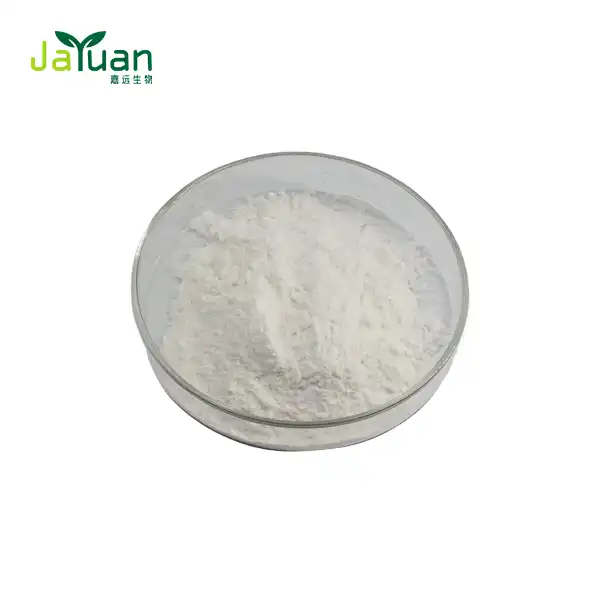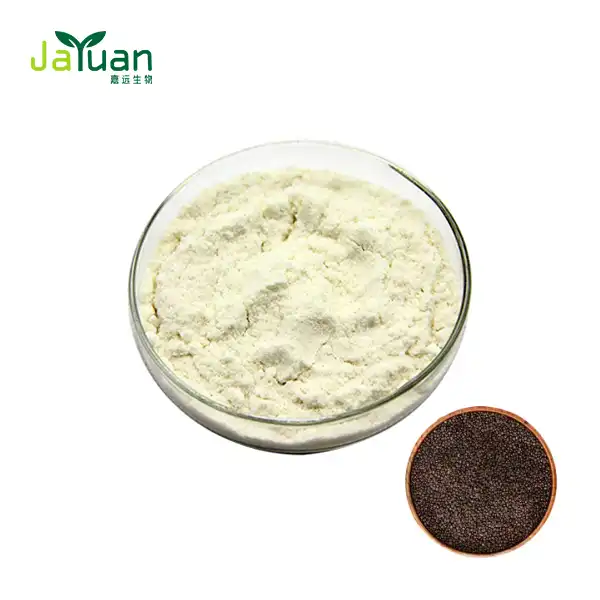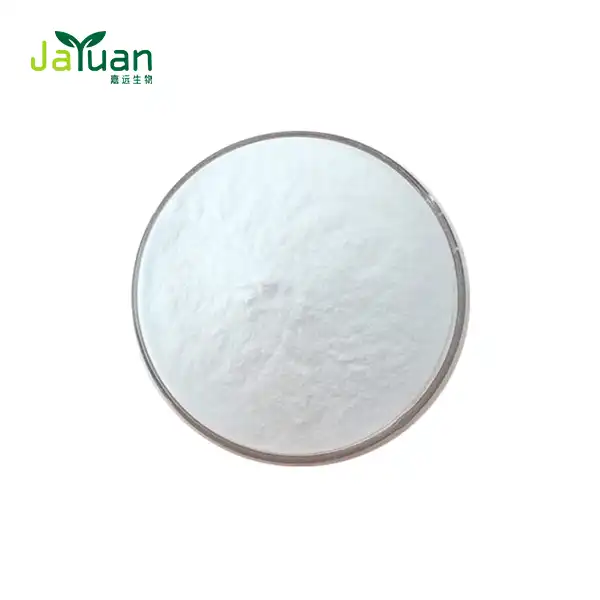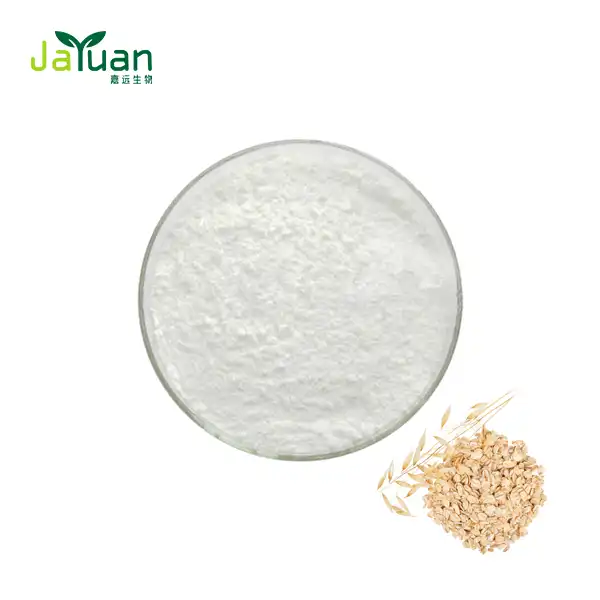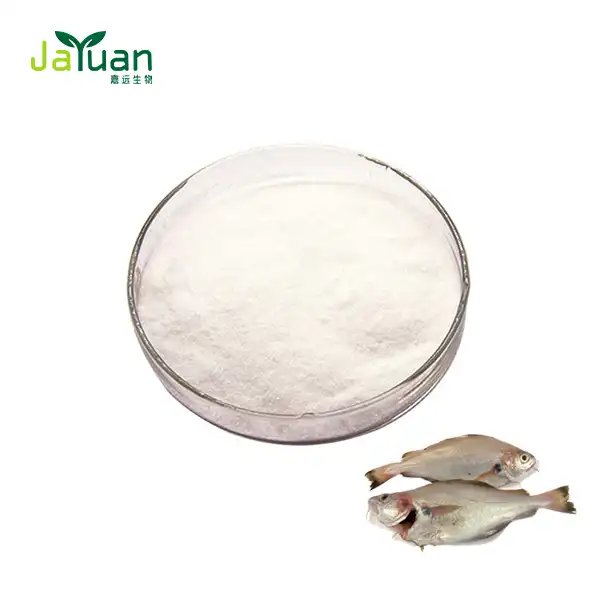What Is Shikimic Acid Pathway?
The discovery and application of the Shikimic Acid Powder have revolutionized natural product synthesis. This pathway, found in plants, fungi, and bacteria, serves as the biological route to produce aromatic amino acids and a variety of other essential compounds. Understanding its mechanisms is crucial for pharmaceutical, agricultural, and industrial applications. In this blog, we delve into the intricacies of the Shikimic Acid pathway, its importance, and its relevance in today's scientific advancements.
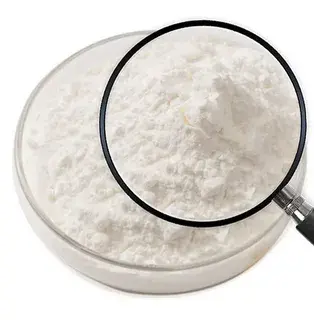
1. What is Shikimic Acid Powder and How is it Used?
Due to its crucial role in the production of Tamiflu, an antiviral medication that is widely used to treat and prevent influenza A and B infections, shikimic acid, a naturally occurring organic compound, has indeed become a focus of pharmaceutical industry interest. Because it is the primary source of the antiviral's active pharmaceutical ingredient (API), it is impossible to overstate the significance of shikimic acid in the semisynthesis of Tamiflu.
Shikimic Acid Powder is primarily extracted from the seeds of the Chinese star anise plant, which is native to Southwest China. The course of extraction includes the hydrolysis of star anise oil, which is then trailed by sanitization moves toward detach the shikimic corrosive. Notwithstanding, the dependence on a solitary plant hotspot for a compound as significant as shikimic corrosive raises worries about the manageability of its extraction. The interest for Tamiflu can spike during flu episodes, which can come down on star anise development and lead to variances in the accessibility of shikimic corrosive.
Manageability and Elective Sources
In light of the manageability worries, there has been a push to track down elective wellsprings of shikimic corrosive. Microbial fermentation processes, which can use various microorganisms like yeast or bacteria to produce shikimic acid, have been the focus of some efforts. This strategy has the potential to provide a more consistent supply for pharmaceutical manufacturing, reduce the impact on natural resources, and offer a more sustainable and scalable alternative to plant-based extraction.
Shikimic acid is also used as a precursor in the synthesis of other pharmaceuticals, such as antivirals and antiviral vaccines, in addition to Tamiflu. Due to its adaptability as a chemical intermediate, it is an important compound for the creation of new medications. As a result, the ability to produce shikimic acid in novel ways may have wider repercussions for the pharmaceutical sector, making it possible to develop novel antiviral treatments.
Financial and Ecological Effect
The financial effect of shikimic corrosive creation is critical, especially for locales where star anise is developed. Nonetheless, the ecological effect of huge scope extraction should be painstakingly figured out how to guarantee that the normal environments of star anise are protected and that the development rehearses are reasonable. By providing a method of production that is more controlled and uses fewer resources, the development of fermentation-based production methods may alleviate some of these pressures.
Considerations for Regulatory Compliance and Public Health The use of shikimic acid in pharmaceuticals is subject to regulatory oversight to guarantee its quality, safety, and efficacy. General wellbeing specialists should likewise think about the accessibility of Tamiflu and other shikimic corrosive inferred prescriptions during flu seasons or pandemics, guaranteeing that there is sufficient stock to meet general wellbeing needs.
2. How Does the Shikimic Acid Pathway Work in Nature?
In a wide range of organisms, the Shikimic Acid Powder is a crucial metabolic route that is both complex and essential to the biosynthesis of essential aromatic compounds. This pathway is essential not only to the organism's own metabolic requirements but also to the production of pharmaceuticals, agrochemicals, and other compounds of industrial importance.
Initial Steps and Enzymatic Reactions The pathway begins with the enzyme DAHP synthase catalyzing the condensation of two important precursors, phosphoenolpyruvate (PEP) and erythrose-4-phosphate (E4P). The initial committed step in the shikimate pathway is the reaction that results in the formation of 3-deoxy-D-arabino-heptulosonate-7-phosphate (DAHP). DAHP then goes through a progression of enzymatic changes, including decrease, isomerization, and parchedness, to frame various intermediates, for example, 3-dehydroshikimate, shikimate, lastly, chorismic corrosive.
Chorismic Corrosive and Its Subsidiaries
Chorismic corrosive is an essential compound in the pathway, going about as a stretching point for the combination of different fragrant amino acids (phenylalanine, tyrosine, and tryptophan) and other significant sweet-smelling compounds. Specific enzymes, each tailored to the requirements of the organism and its environment, catalyze the conversion of chorismic acid into these amino acids.
Metabolic Engineering and Biotechnological Applications It is essential for metabolic engineering to comprehend the enzymes and regulation of the shikimate pathway. Scientists are able to direct metabolic flux in the direction of the production of desired compounds by either introducing novel enzymes with altered substrate specificities or altering the expression levels of key enzymes. Antibiotics, antivirals, and other pharmaceuticals derived from aromatic amino acids or their derivatives may benefit especially from this.
Guideline of the Shikimate Pathway
The guideline of the shikimate pathway is perplexing and includes input restraint, allosteric guideline, and transcriptional control. For example, the finished results of the pathway, like the fragrant amino acids, can repress the action of the main catalyst in the pathway, DAHP synthase, in this manner forestalling the overproduction of these mixtures. Optimizing the pathway for biotechnological applications necessitates an understanding of these regulatory mechanisms.
Industrial Implications The shikimate pathway has a wide range of commercial implications. The semisynthesis of the antiviral drug Tamiflu, for instance, from shikimic acid was previously mentioned. In addition, the pathway is targeted by the herbicide glyphosate, which inhibits the enzyme 5-enolpyruvylshikimate-3-phosphate synthase (EPSPS). As a result, the synthesis of essential aromatic amino acids in plants is disrupted, resulting in the death of the plant.
Environmental and ecological considerations The Shikimic Acid Powder manipulation also has an impact on the environment. For instance, the development of crops that are resistant to glyphosate has been a significant development in agriculture, but it also raises concerns regarding the effects that such modifications will have on the environment. The role that the pathway plays in various organisms can assist in the creation of strategies that are more specific and friendly to the environment.
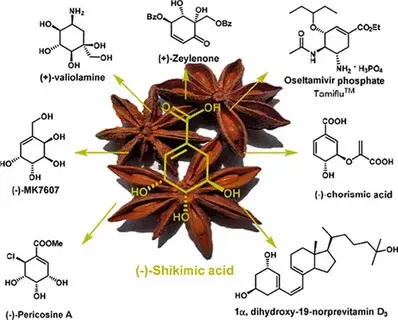
3. What Are the Challenges and Opportunities in Shikimic Acid Production?
Despite its biological importance, the production of shikimic acid faces several challenges. Traditional sources such as Chinese star anise have limited availability and are susceptible to variability in yield and quality. Alternative microbial production systems have been explored to address these challenges, including genetically engineered Escherichia coli and yeast strains. These microbial systems offer scalable production opportunities but require optimization of metabolic pathways, fermentation conditions, and downstream processing for commercial viability.
The Shikimic Acid Powder, essential for the synthesis of aromatic amino acids and other vital compounds, plays a crucial role in both natural and engineered biological systems. Shikimic acid itself has gained prominence, particularly for its role in the production of Tamiflu, highlighting questions about sourcing, sustainability, and the broader implications for pharmaceutical supply chains.
Understanding the intricacies of the Shikimic Acid pathway involves unraveling its biochemical steps and the enzymes involved in converting phosphoenolpyruvate and erythrose-4-phosphate into chorismic acid. This pathway not only serves as a metabolic cornerstone in plants and microorganisms but also serves as a model for metabolic engineering efforts aimed at producing valuable aromatic compounds.
The production of shikimic acid faces challenges such as supply chain vulnerabilities and variability in yield from natural sources. To overcome these hurdles, researchers have turned to microbial production systems, leveraging genetic engineering and fermentation technologies to enhance production efficiency and sustainability. These advancements open new avenues for biotechnological applications and the synthesis of pharmaceuticals and other valuable compounds.
In conclusion, the Shikimic Acid pathway exemplifies nature's intricate biochemical pathways and their potential for industrial applications. By exploring its mechanisms, challenges, and evolving applications, researchers continue to unlock new possibilities in biotechnology and pharmaceutical sciences.
References
- Jones, J. A., Vernacchio, V. R., Sinkoe, A. L., Collins, S. M., Ibrahim, M. H., & Lachance, D. M. (2016). Experimental and computational optimization of an Escherichia coli co-culture for the efficient production of shikimic acid. Metabolic Engineering, 35, 475-485. doi:10.1016/j.ymben.2016.03.011
- Herrmann, K. M., & Weaver, L. M. (1999). The shikimate pathway. Annual Review of Plant Biology, 50(1), 473-503. doi:10.1146/annurev.arplant.50.1.473
- Knop, D. R., & Draths, K. M. (1999). Engineering biosynthetic pathways for aromatic amino acids and vitamins. Current Opinion in Biotechnology, 10(5), 427-433. doi:10.1016/S0958-1669(99)00012-1
- Liu, B., & Frost, J. W. (2006). Microbial production of shikimic acid. Advances in Applied Microbiology, 59, 1-27. doi:10.1016/S0065-2164(06)59001-8
- Hahn, F. M., & Størmer, F. C. (2003). The shikimate pathway: A roadmap to biotechnological production. European Journal of Biochemistry, 270(14), 2633-2640. doi:10.1046/j.1432-1033.2003.03624.x
- Li, Z., Wang, X., Zhang, H., & Ai, X. (2018). Advances in microbial production of shikimic acid and its derivatives. Applied Microbiology and Biotechnology, 102(21), 9045-9058. doi:10.1007/s00253-018-9292-3
- Wu, J. H., Lin, L. C., & Wu, Y. C. (2004). Shikimic acid production in star anise (Illicium verum Hook f.) and related plants. Journal of Agricultural and Food Chemistry, 52(21), 6197-6201. doi:10.1021/jf0401308


